I am trying to get text to sit flush against the top of a TextBlock with no success, I am always left with a gap of a few pixels above the text.
The larger the font, the larger the gap, so its not really that noticeable on a font size of say, 12, but a size of 50 makes it very obvious
Link to image [https://i.stack.imgur.com/dJFVY.png]
A code example to produce this is:
<TextBlock Background="LightCyan"
VerticalAlignment="Top"
FontSize="12"
Text="The quick brown fox"/>
<TextBlock Background="Aqua"
VerticalAlignment="Top"
FontSize="50"
Text="The quick brown fox"/>
<TextBlock Background="LightGray"
VerticalAlignment="Top"
FontSize="80"
Text="The quick brown fox"/>
I also don't think its the Font itself that has the issue, as photoshop (for example) renders the same font correctly aligned with the top of the text area.
Does anybody have any ideas on what is causing the gap, and how to remove it?
Here are some things I've tried:
Setting the VerticalAlignment to Top
Setting LineStackingStrategy to "BlockLineHeight" and setting the LineHeight value to that of the Font size. (While this seems to help a lot, this will affects all lines of text (if its multilined). I was hoping a solution could be found that only affects the space at the top.)
Rendering text in a custom class. (I would really like to avoid doing this, as I'd have to recreate ALL the functionality of the TextBlock.)
EDIT:
Just in case anyone else out there needs this, with BlueM's and NETscape's help and this very handy link: TextBlock as big as a capital letter (ignoring font ascender/descender) where G. Sofien had a very cool solution, I implemented this using all their ideas:
In my code-behind I already had an object representing my text (it's for a drag-and-drop sort of program). In it's constructor I added this code:
Typeface typeface = new Typeface(Font_Family, Font_Style, Font_Weight, new FontStretch());
GlyphTypeface glyphTypeface;
typeface.TryGetGlyphTypeface( out glyphTypeface );
double baseline = glyphTypeface.Baseline * Font_Size;
double capsHeight = glyphTypeface.CapsHeight Font_Size;
double glyphOffset = -1 * (baseline - capsHeight);
GlyphOffset = new Thickness(0, glyphOffset, 0, 0);
(Pardon the lack of error checking)
Baseline: the line where the font "sits".
CapsHeight: the height of a capital letter.
The above code will basically find the distance from the top of the textblock to the top of capital glyph and then create a Thickness with that height to offset textblock in the view.
Note: I am making the assumption that capitals are the tallest characters (which is not always true, but good enough for my purposes. You could iterate through all the glyphs in your text and find the tallest one)
In my view, I then bind the margin of the TextBlock to the GlyphOffset property and it appropriately offsets the text! (Thanks NETscape, for that margin trick!)



